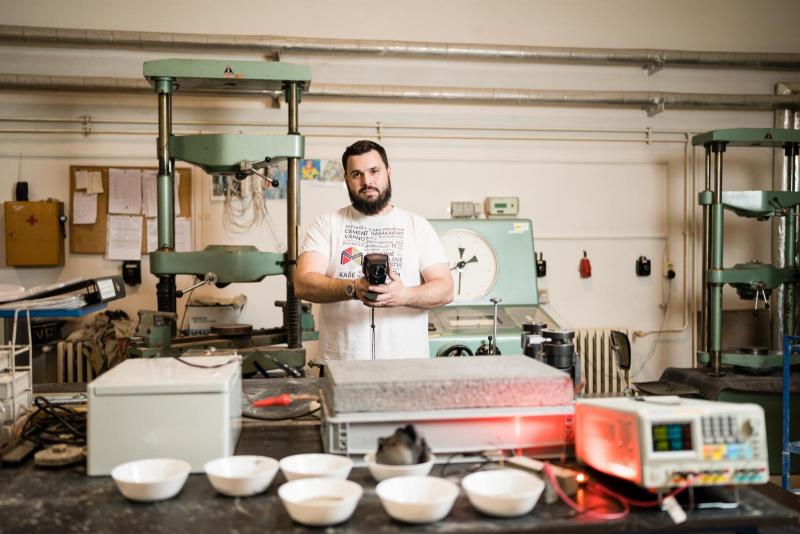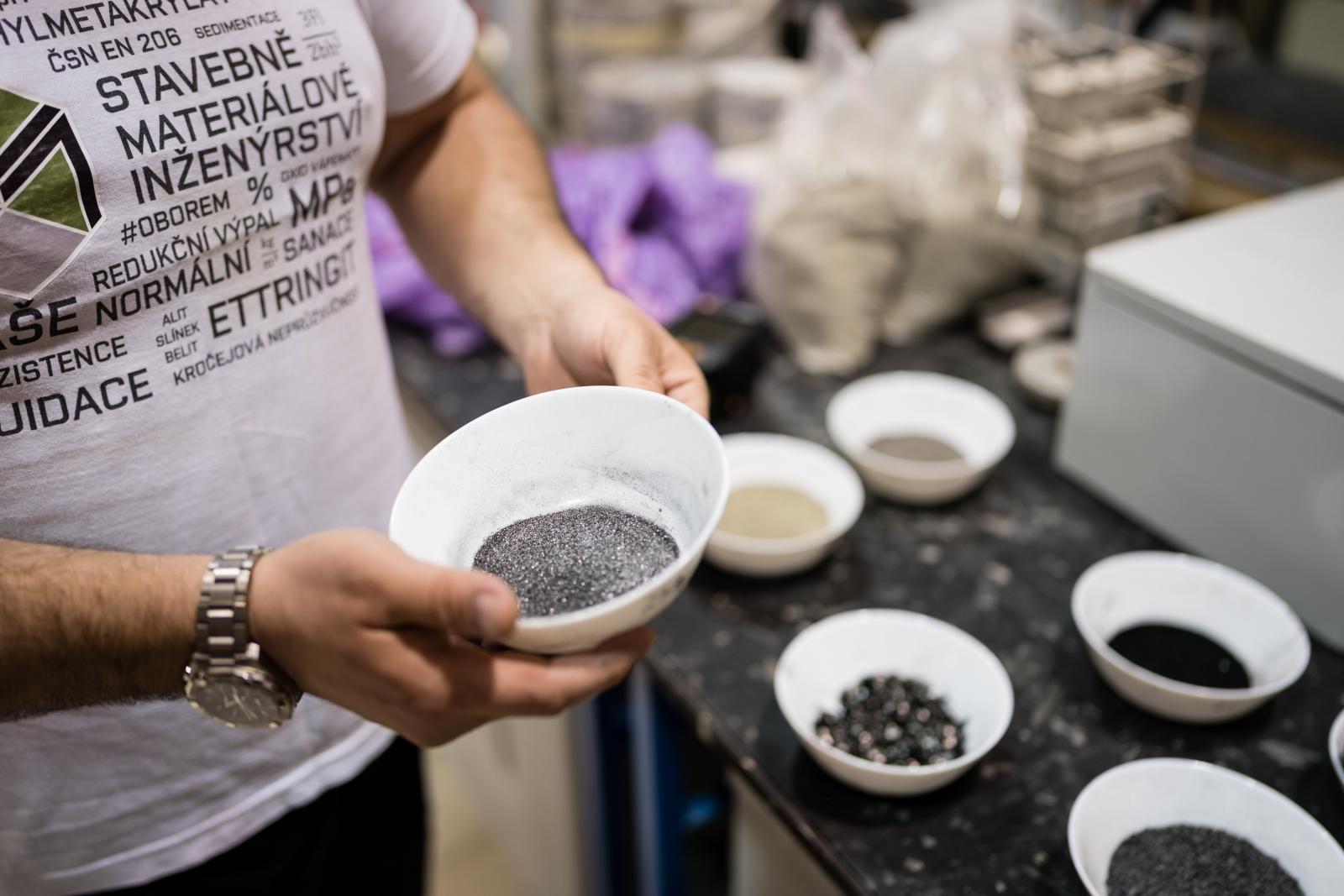Ideas and discoveries
Composite from BUT resists freezing

A new building material with a unique capability of autonomously controlled heating is being developed at the Faculty of Civil Engineering of BUT. During ice and snowfall, it will mean greater safety for users of extremely vulnerable surfaces such as bridges, airports or public transport stops and, for the structures themselves, an extension of their service life. The project was supported by the Technology Agency of the Czech Republic in the MIT Trend project.
The team from the Institute of Building Materials and Components Technology cooperates with BETOSAN on the project. The idea was conceived five years ago while working on another project concerning similar issue. At that time, the metals used for earthing, which are expensive, needed to be replaced by silicate materials. “We started developing concrete that conducts current because normal concrete is an insulator. This gave us an insight into the electrical conductivity of silicate building materials, and on this occasion we discovered that the material heats up,” explains research team member Jindřich Melichar, adding: “In the current project, we are developing a material that must have good electrical conductivity in order to be heated by an electric current.” 
The resulting composite is composed of two or more chemically or physically different components that together give the material new properties. They are created on a silicate base using advanced high-tech fillers. This is the first phase of the project. Its second phase is the creation of an autonomous control unit, in which the staff of the Institute of Microelectronics of the Faculty of Electrical Engineering and Communication are involved. “The control unit will have three modules that will both collect the data they measure on site and, with regard to the weather forecast, will themselves be able to control the power that the system will supply,” Melichar describes. “In practice, the way it will work is that the building components made from our composite will control themselves with respect to the temperature, but also the dew point. Frost does not always form when it freezes, so it will not always be necessary to heat in sub-zero temperatures. On the other hand, if there is a risk of frost forming, the composite will start to pre-heat so that frost does not form at all. By monitoring the temperature online, we can minimise heating time and maximise the energy efficiency of the process, taking into account the current weather forecast and temperature fluctuations.” 
The project, which is scheduled to run from January 2021 to December 2024, is now in the phase of temperature control and adjustment of the composite mixtures to achieve optimum heating parameters. “We have tested a number of materials as fillers. Some fillers can conduct current on their own, but when they get into the cement matrix, they behave differently,” points out Jindřich Melichar as he demonstrates bowls with different samples in the laboratory. There is conventional cement, fly ash, which can be substituted for cement, and conductive components, which are mostly carbon-based: carbon fibre, which when mixed into the mixture will delaminate and form a conductive pathway, or coarser carbon grit, which is a by-product of the petrochemical industry and contains up to 99 per cent carbon. In one of the bowls we are surprised by a pyrolyzed beef bone. By using secondary raw materials, the researchers want to make the material cheaper and reduce the environmental impact. “We have different suggestions for secondary material that could be used as conductive components. We also want to be more considerate in our choice of cement, so we will not use Portland cement, but a more environmentally friendly cement with an admixture of fly ash. This can also bring in some carbon, which improves the electrical conductivity to a small extent,” explains the researcher.
The team members now know roughly which fillers are suitable, although they are still working on the final ‘ideal’ mixture. “We can continue to fine-tune the optimum mixture while we develop the control unit,” says Jindřich Melichar, demonstrating the experiment on two blocks, one made from normal concrete, the other from a conductive formula. When they attache a multimeter to the first one, it measures three million ohms, while the other one measures only three ohms. Both blocks have built-in copper electrodes through which they can be connected to a circuit with diodes – nothing happens with concrete, while composite lights them up. Then a researcher attaches a larger block with a conductive recipe to the source: “We can send a safe voltage there, which according to European standards is a maximum of 25 volts. It's not much, so we want to achieve maximum electrical conductivity in the composite so that it heats up well.” After a while, the block heats up to 50 degrees and the thermal imaging monitor bursts into colour. There is still a year and a half left until the end of the project, but the first interested parties are already contacting us. Together with BETOSAN representatives, researchers from BUT are preparing test applications in the outdoors. “Last year, we even got a little snow, so we have already been able to partially test the system. This winter, we would like to test a larger area in real conditions,” anticipates Jindřich Melichar.
FCE researchers' timeless natural wastewater is one of the best construction in the region
Microplastics in drinking water will increase
Modern civil engineering will design pleasant shopping centres and optimal escape routes for people
Unique solution to rid houses of mould. Now patented
A scientist brings hot lava samples from Iceland to Brno